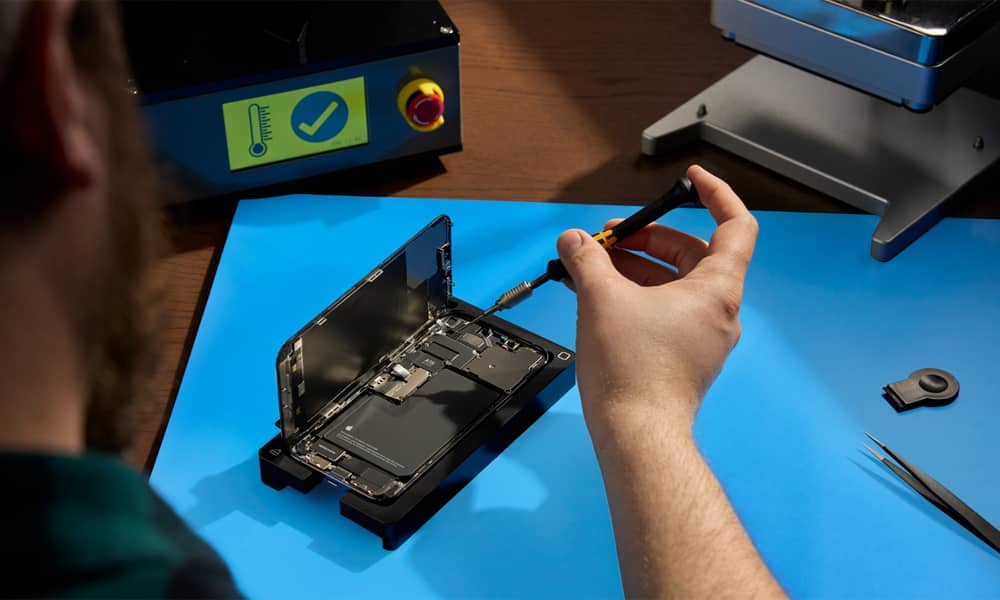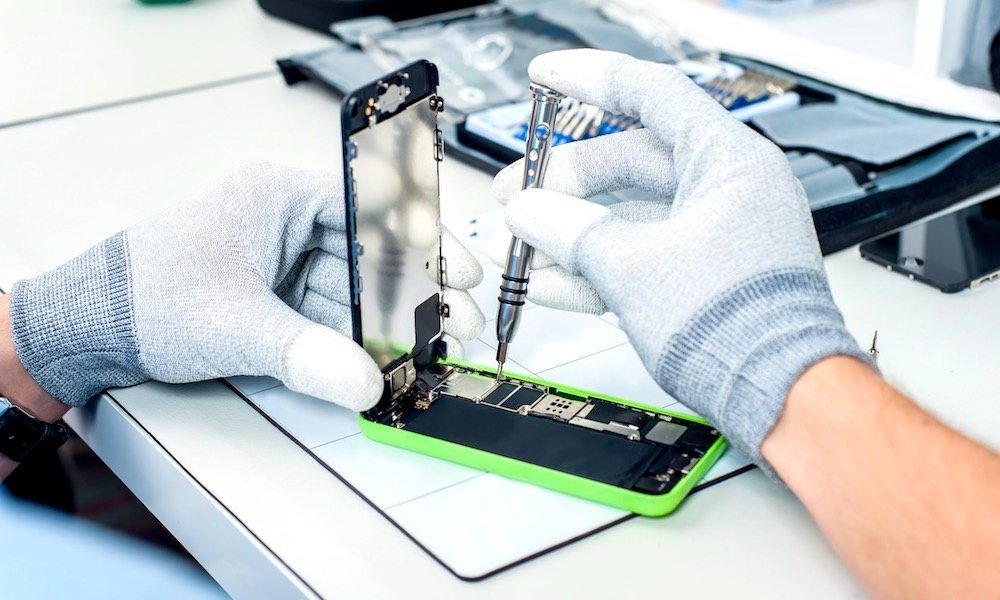Apple To Expand ‘Right to Repair’ Programs for Consumers and Independent Shops
 Credit: Apple
Credit: AppleToggle Dark Mode
Apple will soon increase documentation and repair part availability for the iPhone, Mac, and possibly even the iPad to support repairs of the devices by consumers and independent repair shops.
The news comes via US National Economic Council Director, Lael Brainard, in a set of prepared remarks for a White House event to be held Tuesday night.
Referring to legislation that has passed in California and some other states, Brainard said, “Whether you are in California, Maine, or Michigan, Apple will make the parts, tools, and documentation needed to repair your Apple products available to you at reasonable prices, as outlined in the California law.”
Apple Vice President Brian Naumann also released a statement about Apple’s plans, although he didn’t provide any specifics.
We intend to honor California’s new repair provisions across the United States. Apple also believes that consumers and businesses would benefit from a national law that balances repairability with product integrity, usability, and physical safety.Brian Naumann, Vice President and General Manager of Apple’s Service (repair) Business
Apple first announced a Self Service Repair program in November 2021, taking consumers, self-repair advocates, and observers of the tech industry by surprise. The program finally launched on April 27, 2022, although it was initially limited to only a few specific iPhone models.
It’s not yet clear what exactly this all means, as Apple’s existing program already covers a significant part of its existing product line.
Apple’s repair portal currently allows customers and independent repair shops to order parts and tool kits to facilitate repairs, such as display replacements, speaker repairs, and battery swaps for select iPhone and Mac laptop and desktop models. The tool kits can be rented for a short period of time by DIY consumers or purchased outright by repair shops.
In addition to the needed parts and tools, Apple has also made a large variety of documentation available, including a variety of repair manuals and other technical docs.
However, Apple’s self-service repair program is currently limited to specific iPhone and Mac models. For the iPhone, that’s the iPhone 12 through iPhone 14 lineups, plus the third-generation 2022 iPhone SE; for the Mac, the program covers mostly out-of-warranty Apple silicon Mac desktops and laptops — those released before this year — but does not provide support for older Intel-based models. The iPad, Apple Watch, and other Apple products are not part of the program at all.
Apple actually expanded iPhone parts and documentation access to independent third-party repair shops in 2019. However, there are several limitations to that access. Home-based businesses are not allowed to join the program, and applications can be rejected for any reason. Apple also requires that businesses agree to some strict terms, including having every one of their staff members complete Apple’s certified technician training, and agree to allow Apple to conduct “unannounced audits and inspections” to confirm that they’re not using unauthorized repairs parts or tools.
Neither repair program allows for component-level repairs, limiting those to full motherboard swaps. Apple has not announced what it will charge for parts or for the larger, expensive equipment that Apple says is required to make repairs.
Earlier this month, California Governor Gavin Newsom signed new right-to-repair legislation into state law. The new law requires companies to provide their customers with the required tools to diagnose and repair consumer electronics, as well as appliances.
While Apple had previously fought Right to Repair legislation attempts in the state, in August, it sent a letter to the legislature supporting the bill. However, the California bill actually benefited Apple, as it requires service and repair facilities that are not official repair providers to tell the consumer whether they’re using replacement parts that were not obtained from the device manufacturer.
Manufacturers are also not required to provide parts, tools, or documentation for any component that would disable or override antitheft security measures, such as Apple’s Touch ID and Face ID.







